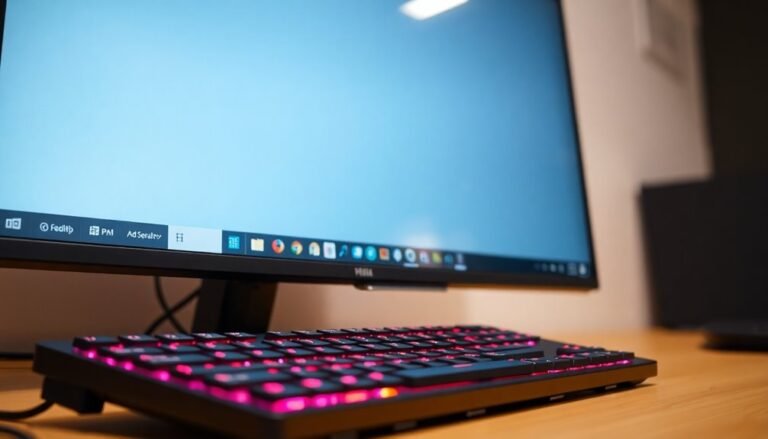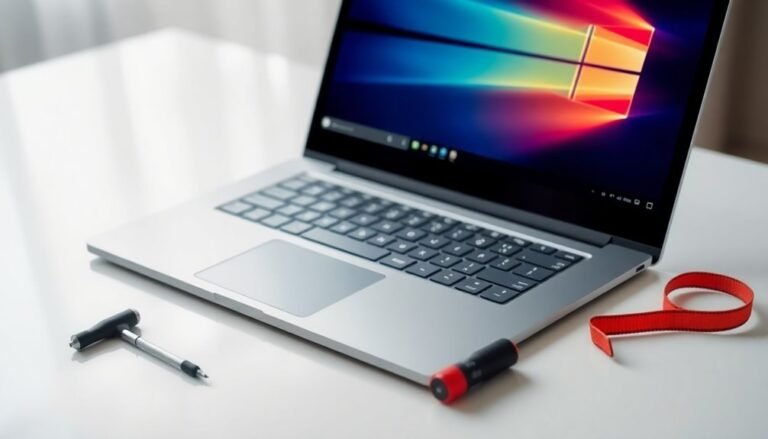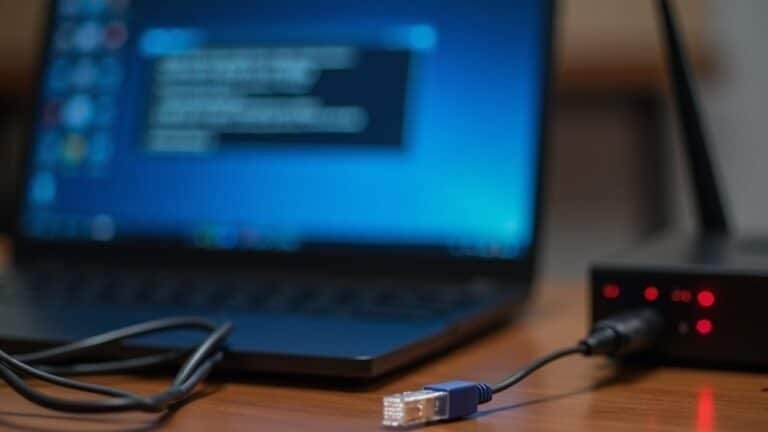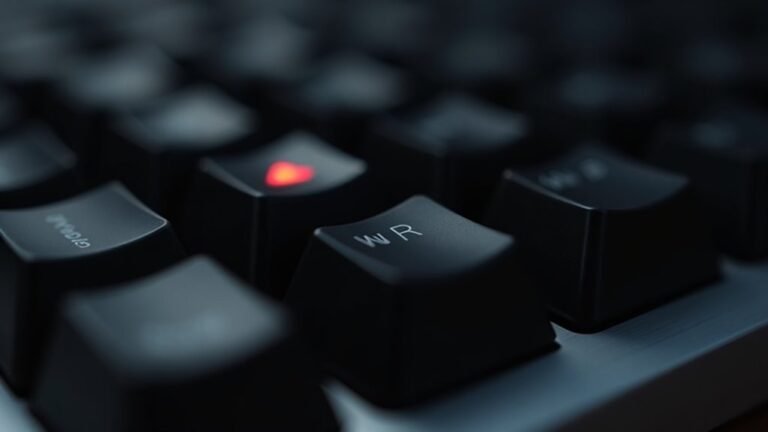Windows Problem Code 43 Bluetooth: Fix Bluetooth Device Error
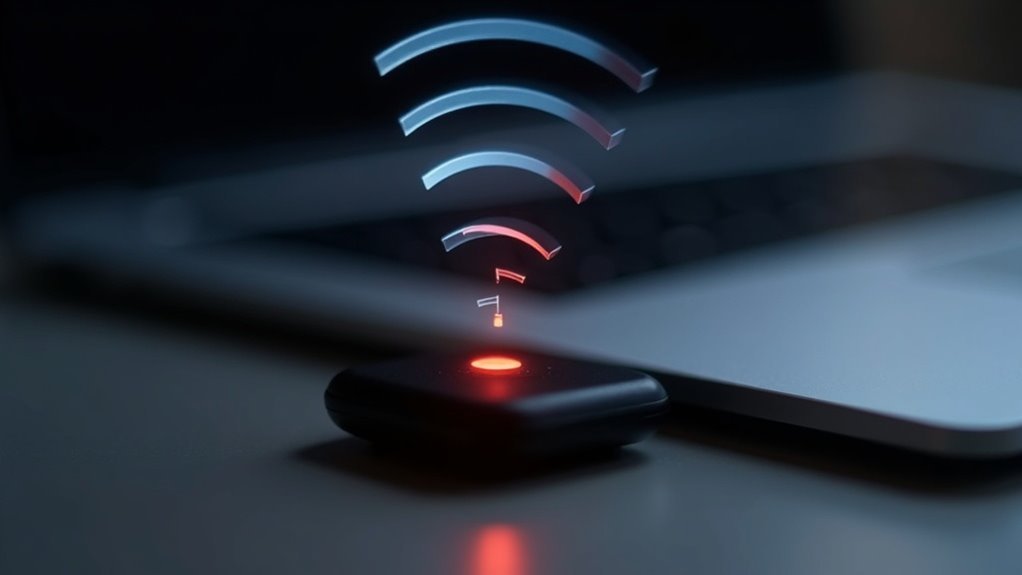
If you see Windows Problem Code 43 with your Bluetooth device, start by restarting your computer and power-cycling your Bluetooth hardware. Check Device Manager for errors, update or reinstall Bluetooth drivers, and run the Windows Bluetooth troubleshooter.
Make sure Bluetooth is enabled in BIOS, and double-check for device interference or loose connections. If issues persist, advanced steps like running “sfc /scannow” or checking system logs can help you pinpoint the root cause.
There’s more you can do to resolve stubborn errors.
Understanding the Causes of Bluetooth Code 43 Error
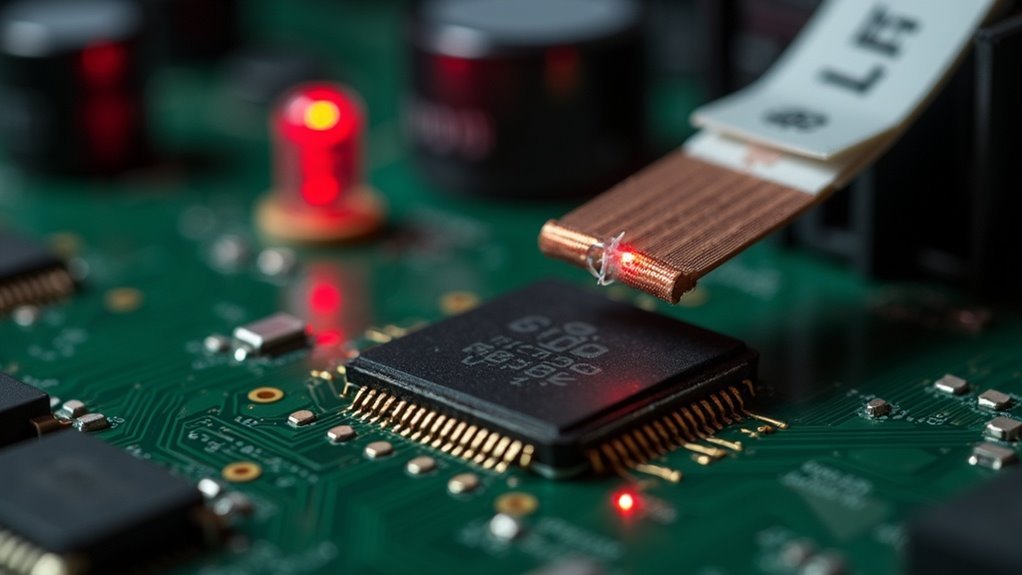
Bluetooth Code 43 Error: Causes and How to Fix It
If you see a Bluetooth Code 43 error on your Windows device, it means Windows can’t communicate properly with your Bluetooth hardware or software. This common Bluetooth error often results from hardware problems such as a failing internal Bluetooth module, a damaged USB Bluetooth dongle, or loose connections.
Physical damage or wear and tear on your Bluetooth device can also trigger Code 43 in Windows. Outdated, corrupted, or incompatible Bluetooth drivers are another major cause of the Code 43 error. Driver conflicts, incomplete installations, or interference from security software can further disrupt Bluetooth functionality.
Additionally, BIOS or firmware settings can lead to this issue if Bluetooth components are disabled, firmware is outdated, or power management settings are misconfigured. Running the Bluetooth troubleshooter in Windows can sometimes help identify and resolve underlying issues causing the Code 43 error by guiding you through diagnostic steps automatically. System-level problems including corrupted system files, registry errors, or improper device policies may also cause Bluetooth Code 43 errors.
External factors like Bluetooth device interference or connecting too many Bluetooth peripherals at once can overwhelm your system, resulting in this error.
To fix Bluetooth Code 43 errors, update or reinstall your Bluetooth drivers, check hardware connections, review BIOS and firmware settings, and troubleshoot system files. Understanding these causes will help you resolve Bluetooth Code 43 errors quickly and restore seamless device connectivity on Windows.
Essential Troubleshooting Steps for Code 43
How to Fix Bluetooth Code 43 Error in Windows: Essential Troubleshooting Steps
If you’re encountering the Bluetooth Code 43 error on your Windows device, you’re not alone. This common issue can disrupt your Bluetooth connectivity, but several proven troubleshooting steps can help you fix it quickly.
1. Restart Your Computer and Power Cycle Bluetooth Devices
Begin by restarting your computer to clear temporary glitches and apply recent system updates. For a more thorough reset, perform a full shutdown, unplug your device, and remove the battery if possible before powering back on.
Additionally, power-cycling your external Bluetooth devices can refresh their connection and resolve communication issues. It’s also advised to unplug all external devices such as your mouse, keyboard, and other Bluetooth devices before reconnecting only the Bluetooth device you want to troubleshoot.
2. Run the Windows Bluetooth Troubleshooter
Windows includes a built-in Bluetooth troubleshooter designed to detect and fix common Bluetooth problems automatically. To access it, go to Settings > Troubleshoot > Other Troubleshooters****, then select and run the Bluetooth troubleshooter.
Follow the on-screen prompts for guided repairs.
3. Check and Restart Bluetooth Support Service
Ensure that the Bluetooth Support Service is running properly. Open the Services console by typing `services.msc` in the Run dialog, locate “Bluetooth Support Service,” and confirm it’s enabled.
If necessary, restart the service to restore Bluetooth functionality.
Summary of Steps to Resolve Bluetooth Code 43 Error:
- Restart your Windows PC and power cycle your Bluetooth devices
- Use the Windows Bluetooth troubleshooter for automatic fixes
- Verify and restart the Bluetooth Support Service via services.msc
By following these essential troubleshooting steps, you can effectively fix Bluetooth Code 43 errors and restore seamless Bluetooth connectivity on your Windows device without needing advanced technical skills.
For more tips and detailed guides on Bluetooth issues, stay tuned to our tech support resources.
Reinstalling and Updating Bluetooth Drivers
Fix Bluetooth Code 43 Errors by Reinstalling and Updating Bluetooth Drivers
Are you experiencing persistent Bluetooth Code 43 errors on your Windows PC? These issues often stem from outdated, corrupted, or incompatible Bluetooth drivers.
To resolve this, start by identifying your system’s processor type (64-bit or 32-bit) via Control Panel > System, and check your Bluetooth adapter model in Device Manager. Next, download the latest Bluetooth driver directly from your device manufacturer’s official website or through Windows Update.
Before making any changes, create a system restore point to safeguard your data.
How to Reinstall Bluetooth Drivers on Windows:
- Open Device Manager by right-clicking the Start button and selecting Device Manager.
- Expand the Bluetooth category, right-click your Bluetooth adapter, and choose Uninstall device.
- Shut down your PC completely, wait a few moments, then reboot. Windows should automatically reinstall the Bluetooth driver.
- If the driver doesn’t reinstall, open Device Manager again, click Action > Scan for hardware changes, or manually install the driver by selecting “Browse my computer for driver software.”
How to Update Bluetooth Drivers on Windows:
- In Device Manager, right-click your Bluetooth device and select Update Driver.
- Choose “Search automatically for updated driver software” and follow the on-screen instructions.
- If updating causes issues, consider rolling back to a previous driver version by selecting Properties > Driver > Roll Back Driver.
- Always restart your computer after installing or updating Bluetooth drivers to ensure the changes take effect.
By following these steps to reinstall and update your Bluetooth drivers, you can effectively fix Bluetooth Code 43 errors and improve your device’s connectivity and performance.
For more tips on troubleshooting Bluetooth issues, visit our website regularly.
Advanced Methods to Resolve Persistent Errors
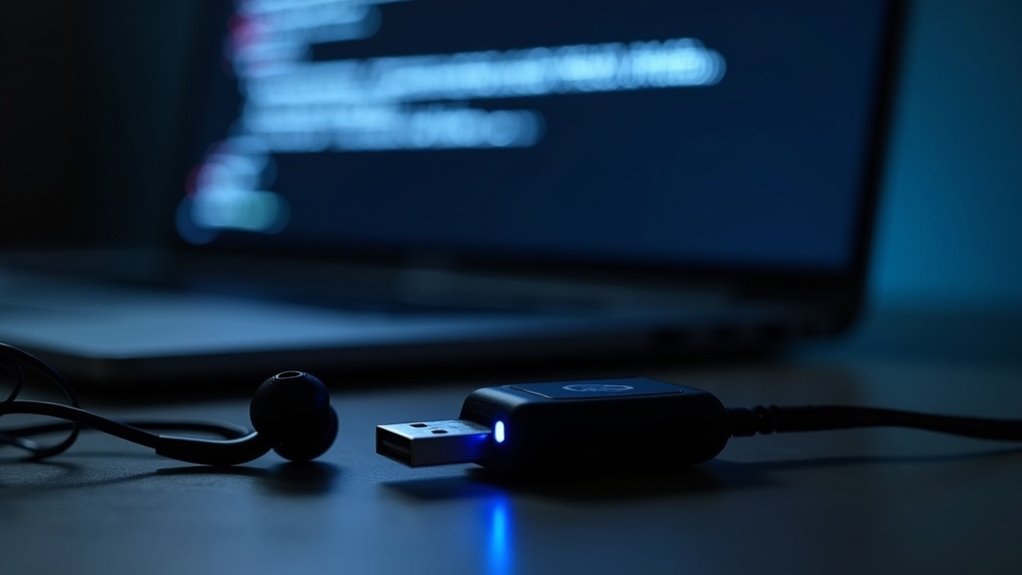
Advanced Solutions to Fix Bluetooth Code 43 Error on Windows
If reinstalling and updating your Bluetooth drivers doesn’t fix the Bluetooth Code 43 error on your Windows PC, try these advanced troubleshooting methods to resolve persistent Bluetooth problems.
Start by running the Windows Bluetooth troubleshooter: go to Settings > Troubleshoot > Other troubleshooters > Bluetooth. This built-in tool automatically detects and repairs common Bluetooth issues, helping you quickly restore connectivity.
For OEM devices, use manufacturer-specific utilities such as Dell SupportAssist or Intel® Driver & Support Assistant. These tools provide tailored diagnostics and automated fixes designed to resolve Bluetooth Code 43 errors effectively.
Additionally, perform system-level repairs by running command-line utilities like “sfc /scannow” and “DISM /Online /Cleanup-Image /RestoreHealth” to scan for and fix corrupted system files that might be causing Bluetooth failures.
Don’t forget to check BIOS and hardware settings. Ensure Bluetooth is enabled in your BIOS or UEFI firmware, and update your BIOS if necessary to improve hardware compatibility.
Hardware troubleshooting steps like reseating your Bluetooth adapter and power-cycling your device can also help resolve connection issues. If the problem persists, consider using System Restore or performing a Windows Reset to repair system integrity and fix the Bluetooth Code 43 error.
Key steps to fix Bluetooth Code 43 error:
- Use OEM or Intel Bluetooth utilities for device-specific troubleshooting
- Verify and update BIOS/UEFI settings to enable Bluetooth
- Run “sfc /scannow” and “DISM” commands to repair Windows system files
Monitoring Device Manager and System Logs
Effective Monitoring of Device Manager and System Logs to Fix Bluetooth Code 43 Errors
To effectively resolve persistent Bluetooth Code 43 errors, it’s crucial to monitor Device Manager and system logs regularly. Start by opening Device Manager in Windows and checking your Bluetooth device status after updates or system changes. Look for warning icons, error messages, or Code 43 alerts in the device properties. Record the driver version and device status to aid in troubleshooting.
Use Event Viewer to filter and review Bluetooth or USB-related system logs, identifying error messages and timestamps that indicate when the issues occur. Additionally, utilize Windows Reliability Monitor to get a clear timeline of device and driver failures, helping correlate problems with recent updates or changes.
OEM utilities and tools like Intel Driver & Support Assistant offer real-time alerts for Bluetooth driver failures. Exporting these logs and error reports is essential when escalating the problem to technical support, ensuring a faster and more accurate diagnosis.
Regular monitoring combined with these tools significantly improves the chances of resolving Bluetooth Code 43 errors efficiently.
Evaluating Bluetooth Hardware and Compatibility
How to Evaluate Bluetooth Hardware and Compatibility for Windows Devices
If you’re experiencing Bluetooth issues or Code 43 errors on your Windows PC, a key step is evaluating your Bluetooth hardware and compatibility. Start by identifying your Bluetooth device type—whether it’s a USB adapter, integrated module, or external dongle—using hardware and vendor IDs found in Device Manager.
Confirm the Bluetooth version (e.g., 4.0, 5.0) and supported profiles like A2DP or HID match your device needs and Windows version, especially Windows 11.
Common Bluetooth compatibility problems occur when hardware lacks updated drivers tailored for the latest Windows updates. Always check the manufacturer’s website for driver updates and verify if your Bluetooth device is still officially supported. Using incorrect or generic drivers can lead to persistent connectivity issues.
To effectively troubleshoot Bluetooth hardware compatibility, focus on these factors:
- Driver and Vendor Matching: Ensure your Bluetooth driver matches your specific device model and Windows OS version.
- Bluetooth Profile Support: Verify that your hardware supports necessary Bluetooth profiles required by your accessories, such as audio streaming (A2DP) or input devices (HID).
- Environmental and Hardware Conditions: Check for wireless interference, poor-quality USB ports, or physical obstacles that may affect Bluetooth signal strength.
Performing a thorough evaluation of your Bluetooth hardware and compatibility can help you isolate and resolve Code 43 errors and other Bluetooth connection problems on Windows PCs.
For the best results, always keep Bluetooth drivers updated and confirm device support status.
Frequently Asked Questions
Can Code 43 Affect Bluetooth Audio Quality or Connection Stability?
Yes, Code 43 can degrade your Bluetooth audio quality and disrupt connection stability. You’ll notice drops, lag, or distorted sound. Update your drivers, run Windows troubleshooters, and consider hardware checks if issues persist after software fixes.
Will Using Bluetooth Dongles Void My Laptop Warranty?
You won’t void your laptop warranty by simply using a Bluetooth dongle, but opening the chassis or altering internal parts usually will. Stick to external use; always check your manufacturer’s policy and keep proof of purchase.
How Do I Backup Bluetooth Device Pairings Before Troubleshooting?
You can’t directly back up Bluetooth device pairings on Windows. Manually note paired devices before troubleshooting. You’ll need to re-pair them later, since neither registry exports nor driver backups reliably restore Bluetooth pairings after reinstallation or repair.
Are Third-Party Bluetooth Utilities Safe to Use With Windows?
You shouldn’t assume third-party Bluetooth utilities are safe with Windows. They can introduce security risks, compatibility issues, and privacy concerns. Always research utilities, prefer official tools, and check for regular updates before installing anything on your system.
Does Code 43 Impact Bluetooth Low Energy (BLE) Devices Differently?
Ever wonder if Code 43 hits BLE devices differently? You’ll notice BLE’s simpler architecture can make error detection faster, but you still need to update drivers, reset hardware, and check for stack updates just like with classic Bluetooth.
Conclusion
When you face the Bluetooth Code 43 error, remember: every technical issue is a puzzle waiting for your expertise. Follow each troubleshooting step, from driver updates to hardware checks, and don’t let frustration cloud your focus. By systematically resolving conflicts, you’ll transform that stubborn error into a solved problem. Isn’t it satisfying to outsmart your device? Stay diligent—each fix strengthens your troubleshooting skills and guarantees your Bluetooth devices connect flawlessly in the future.


